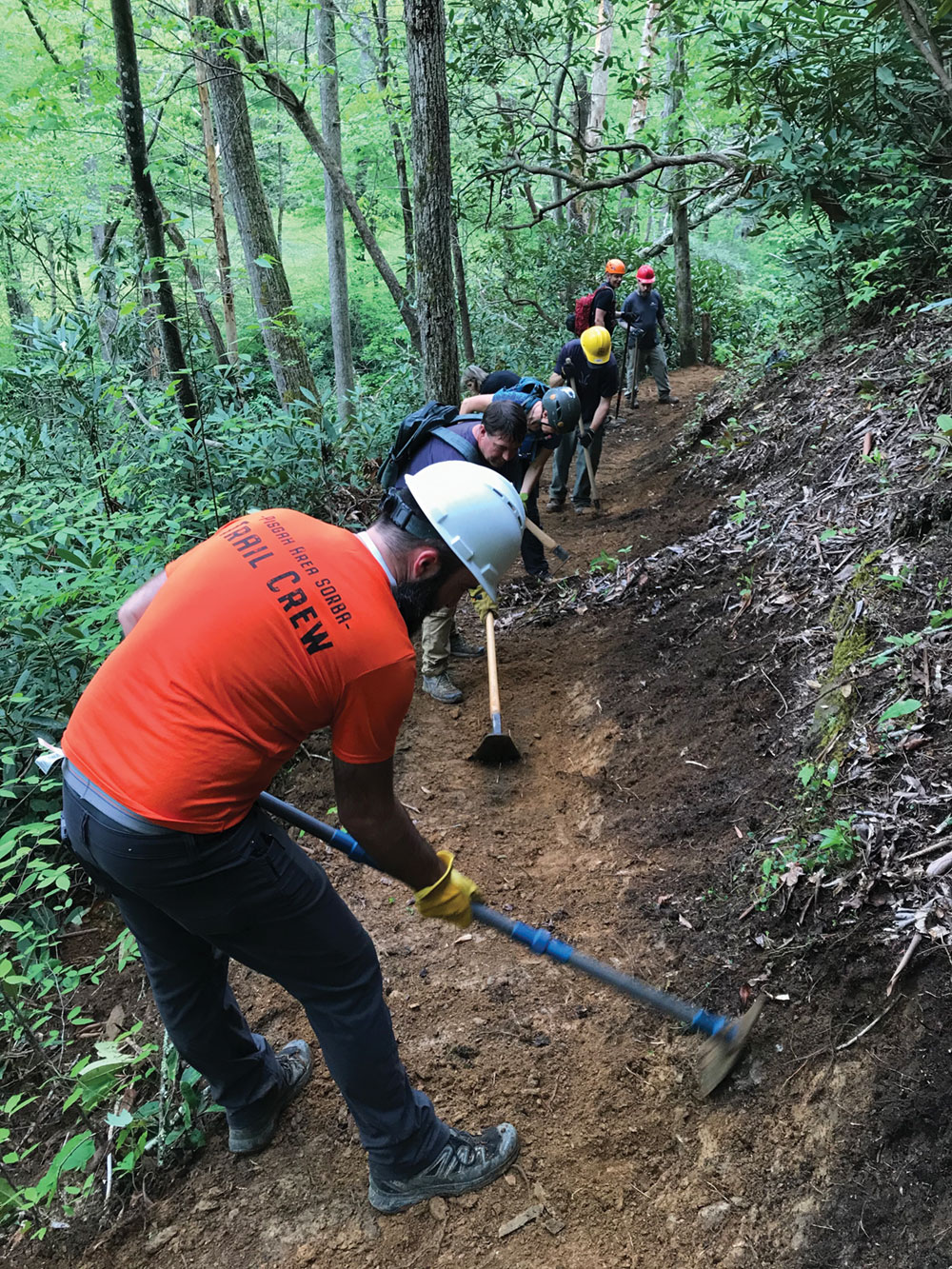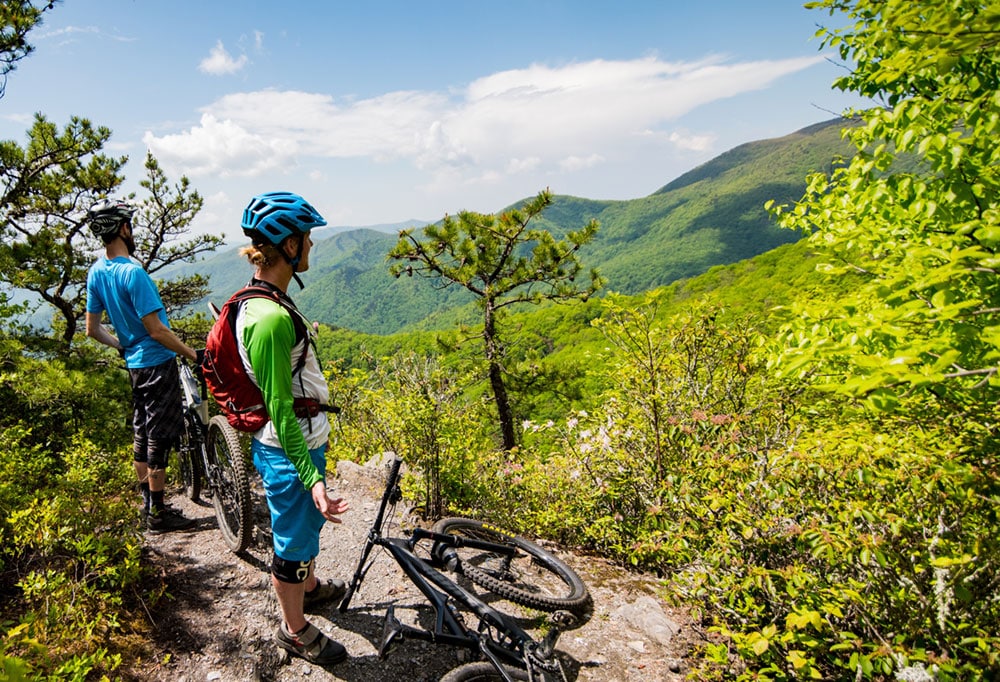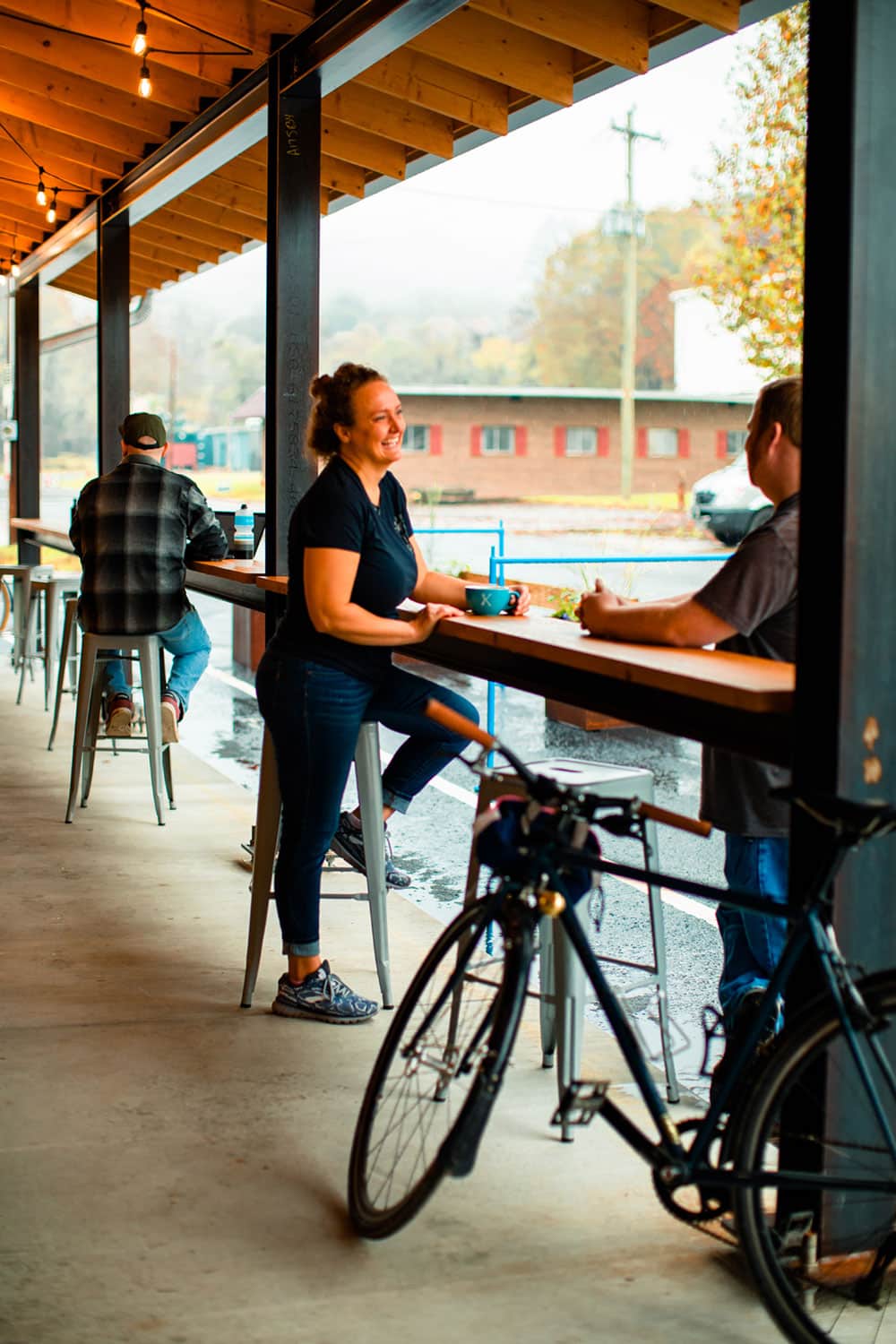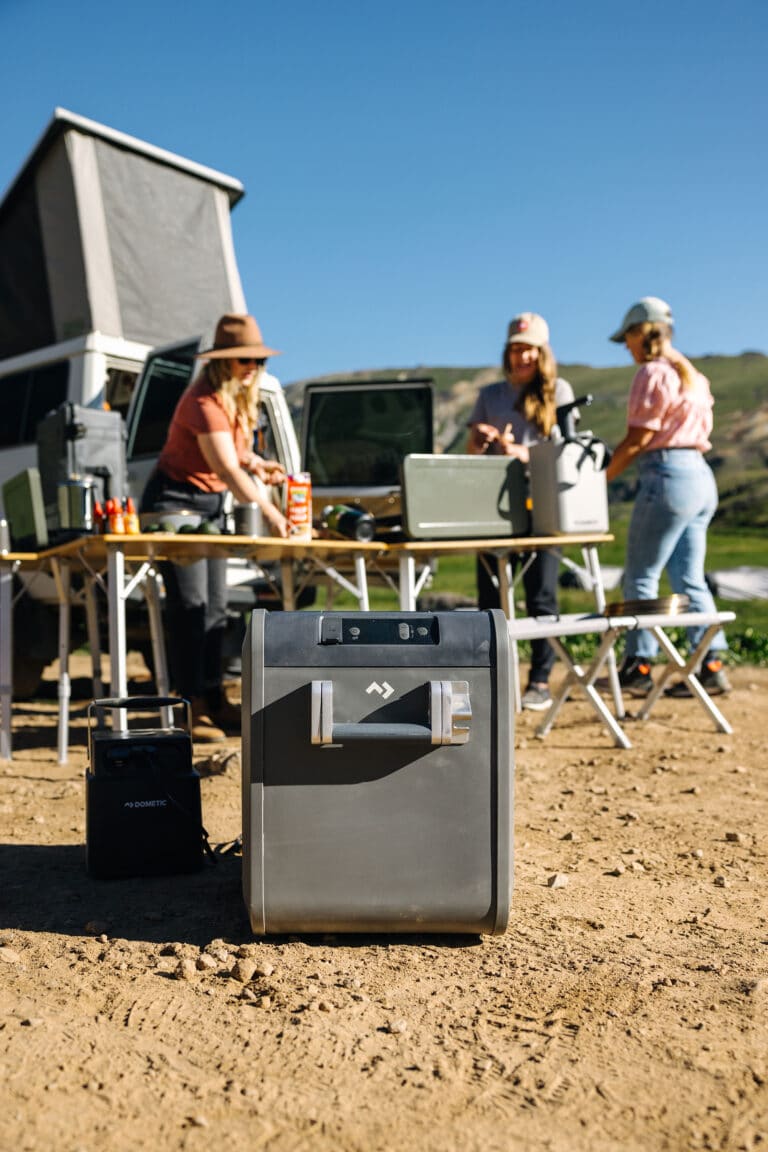With broad community efforts and miles of trails in the works, Old Fort is poised to become the region’s new recreation hot spot.
Western North Carolina’s Pisgah National Forest has a well-deserved reputation as a premiere mountain biking destination, but many of the most iconic trails are clustered in a relatively small part of the sprawling, 500,000-acre tract of land. The eponymous Pisgah Ranger District is packed with singletrack, and, with DuPont State Forest just 15 minutes away, the region around Brevard, N.C., features hundreds of miles of multi-use trail for hikers, mountain bikers, equestrians, and other users to enjoy. About 30 minutes east of Asheville, it’s a different story, and the 192,000-acre Grandfather Ranger District has huge swaths of land without a trail to be found. Jason McDougald and the nonprofit G5 Collective are looking to change that.
In 2013, McDougald took a position as the Executive Director of Camp Grier, located in the small community of Old Fort, N.C. At the time, the town of less than a thousand people felt largely forgotten. Its days as a manufacturing hub seemed long gone, and one business after another left to take advantage of cheaper labor overseas. Despite the economic hardship, many residents remained unwilling to leave their town and its natural beauty amid the tallest mountains east of the Mississippi.
As someone who grew up in the outdoor industry and had seen how recreation was revitalizing similar areas around the country, McDougald thought the time was right for new trails in Old Fort. In particular, he wanted to take Heartbreak Ridge—a four-mile, 2,000-foot descent off the Blue Ridge Parkway—and extend it into the town of Old Fort, where riders could perhaps enjoy a beverage or bite to eat. The Forest Service was open to a new trail, but the community would need to prove capable of caring for its existing system first.

To effectively maintain the area’s trails, McDougald knew he would need to rally support from as many different user groups as possible. The result was the G5 Collective—“G” for the Grandfather district, and 5 for the five counties spread across its acreage. As a nonprofit initiative of Camp Grier, the Collective brought together equestrians, mountain bikers, hikers, runners, and many other trail users for regular work days on Heartbreak Ridge and another local gem called Kitsuma.
The group’s steady progress accelerated when the Hellbender 100 ultra began basing out of Camp Grier. As an entry requirement, runners needed to log eight hours of volunteering, either at another ultra or in the form of trail maintenance. “We started hosting trail work days at camp, and we’d have 50 people on a Saturday and another 50 on a Sunday that would show up, many coming all the way from Raleigh or Greensboro,” McDougald says. “That’s when the Forest Service kind of started to believe we could take care of these trails.”
As enthusiasm for the Old Fort Trails Project grew, the plan ballooned into a proposal for 27 miles of new trails—and the price tag increased to match. McDougald admits, “We had no way of paying for it, but somebody told me to talk to People On the Move for Old Fort. That’s how I met Lavita Logan.”
A lifelong resident of Old Fort, Logan is a founding member and coordinator of the Old Fort Community Forum. When she noticed that the town’s Black community was underrepresented at the meetings, she formed a working subgroup, People on the Move for Old Fort, to give these residents a space to voice their opinions and connect with local resources. When McDougald approached her about the trails project, Logan immediately saw the potential benefits for the town from both an economic and wellness standpoint: “When I was growing up, we stayed outside, played in the woods, swam in Curtis Creek—we were doing a whole lot outside. These days, you don’t see a lot of kids doing that, and I’m hoping trails will get them involved especially for the health and wellness of the community.” To help grease the wheels of the project, People on the Move for Old Fort applied for and were awarded a $450,000 economic development grant from the Kate B. Reynolds Charitable Trust. When Logan proposed that the group pass $75,000 through the G5 Collective, the vote in support was unanimous.

It was a watershed moment for the Old Fort Trails Project, and, in addition to the substantial donation, a few more pieces of the puzzle were about to fall into place. In August, 2019, NC Governor Roy Cooper passed Senate Bill 290, allowing breweries to serve their own beer in previously dry counties or municipalities. Days later, Hillman Beer announced that it would be expanding beyond its footprint in brewery-rich Asheville to open a facility in Old Fort—a $700,000 project that would bring dozens of new jobs and a fresh attraction to the town.
Shortly after, cycling apparel manufacturer Kitsbow announced it would be moving its business from California to Old Fort, bringing more than 50 jobs and $1 million in investment to a region once known for textile production. Since then, Kitsbow’s ranks have grown to include 60 full-time employees, and the construction of a Ride House offering a variety of amenities to visitors doubled the company’s initial investment. To CEO David Billstrom, Old Fort presented exciting production possibilities, but it was also a burgeoning trail town offering an attractive quality of life for his employees: “Some of our workers can walk to work from their homes, and several of us commute from Black Mountain on our bikes. It’s a livable town with a talented workforce. You really do get the best of both worlds.”
Armed with the contribution from People on the Move for Old Fort and the support of two of the town’s newest businesses, McDougald and the varied user groups making up the G5 Collective could take the first steps toward turning plans into reality.
As support for the G5 Collective expanded, the scope of the Old Fort Trails Project broadened even further. Lisa Jennings, the U.S. Forest Service’s Recreation and Trails Program Manager for the Grandfather District, has gotten to shepherd it along the way. “Jason and I would have never thought that that one discussion would have ended up where we are today with 42 miles of trails. But it did, because that’s what we heard from the community. That’s what fits this landscape and this connection to Old Fort that’s so unique.”
At the moment, the Old Fort Trails Project is still a concept on a map. While she’s confident construction can begin this winter, Jennings acknowledges that it will be a long-term process to see the plan through. “It could be five to 10 years. We’re not trying to just pop out 40 miles in a year. We really want to have the best builders, have great design, and we want to make sure that everything’s done right, so that this project is going to feed the community for a long time. From a land manager perspective, we also want to make sure that we can maintain what we’re building. The Forest Service doesn’t have a lot of those resources, which is why the G5 and the community efforts are huge.”
There’s a tremendous amount of behind-the-scenes work that has made the G5’s initiative successful, but one key ingredient is so obvious it’s in the name: Collective. The nonprofit’s commitment to multiple user groups has helped it build a broad base of support—and an impressive number of volunteer hours that gave the Forest Service confidence that the community could support the trails it plans to construct.
The Old Fort Trails Project is Jennings’ third comprehensive trail planning effort, and she hopes to continue to apply the model across the Grandfather Ranger District wherever there’s energy and enthusiasm for trails in the local communities. That might not mean 42 miles of trails, but Jennings thinks that all communities can strive for systems that fit their resources and the surrounding landscape. Regardless of a project’s size, she says that the first step is reaching out. “I can’t overstate the value of volunteerism and getting involved in your local community and trails,” she says. “Because, you know, with all of these stories, that’s how it got started. And that’s how we make stuff happen.”
Cover photo: The Old Fort Ride House. Photo courtesy of the McDowell Tourism Authority







